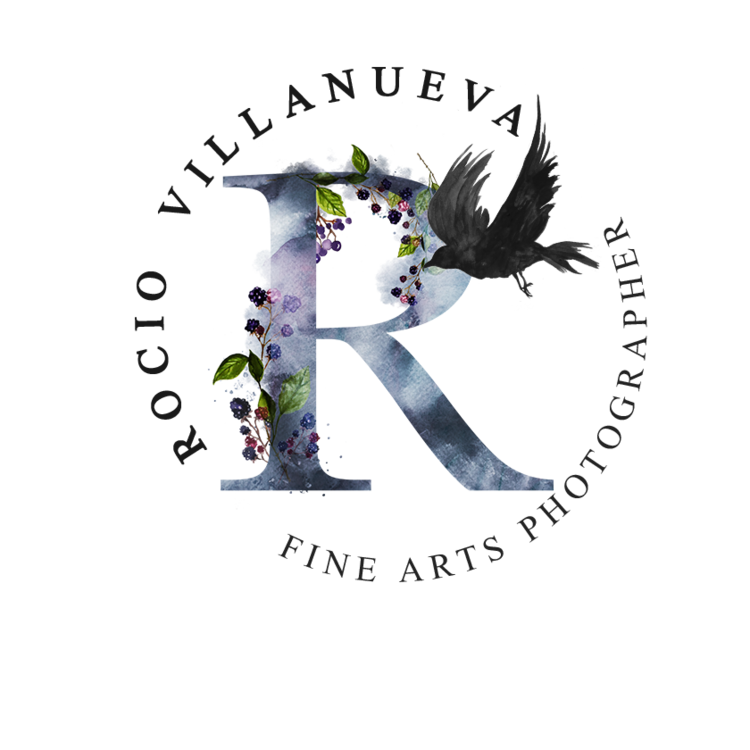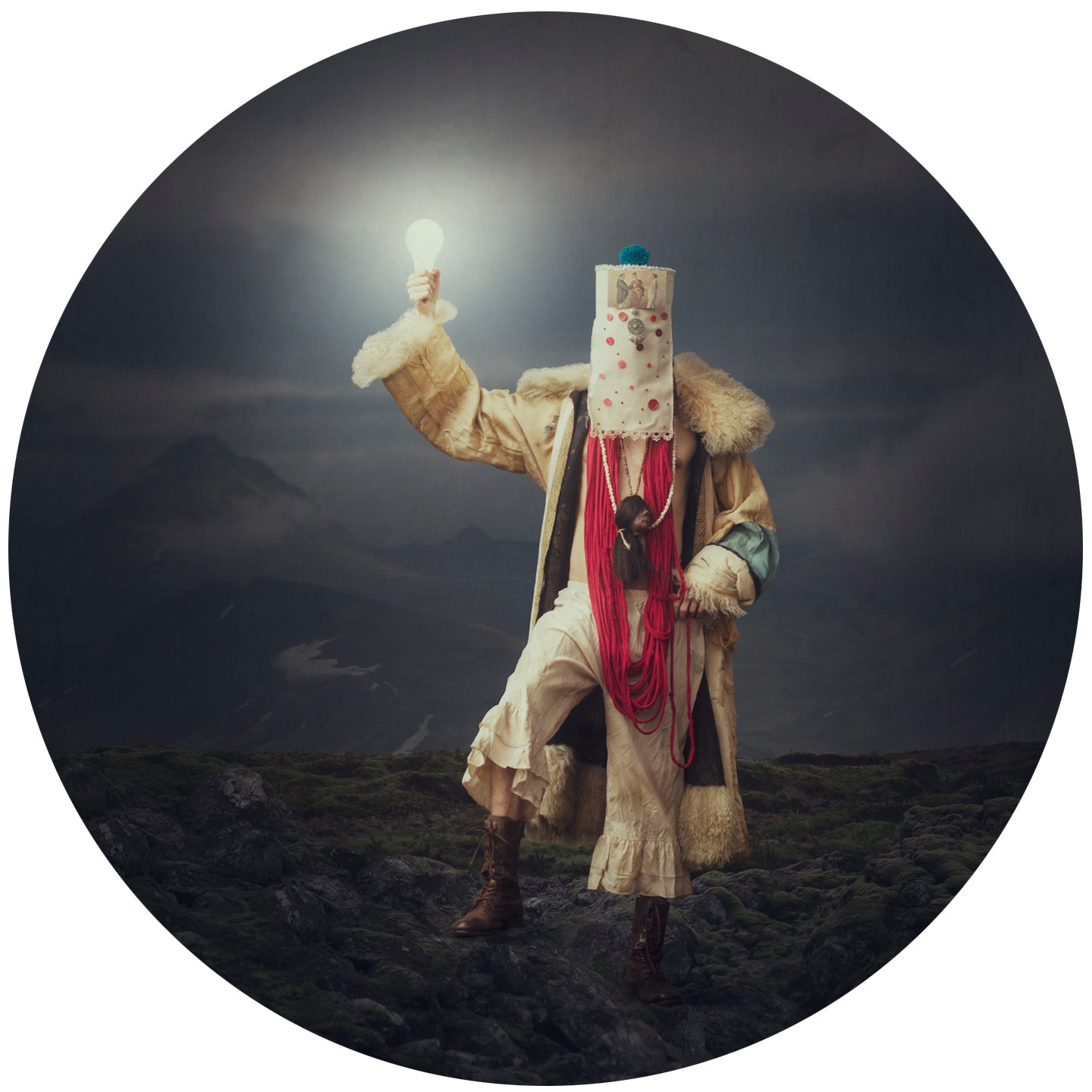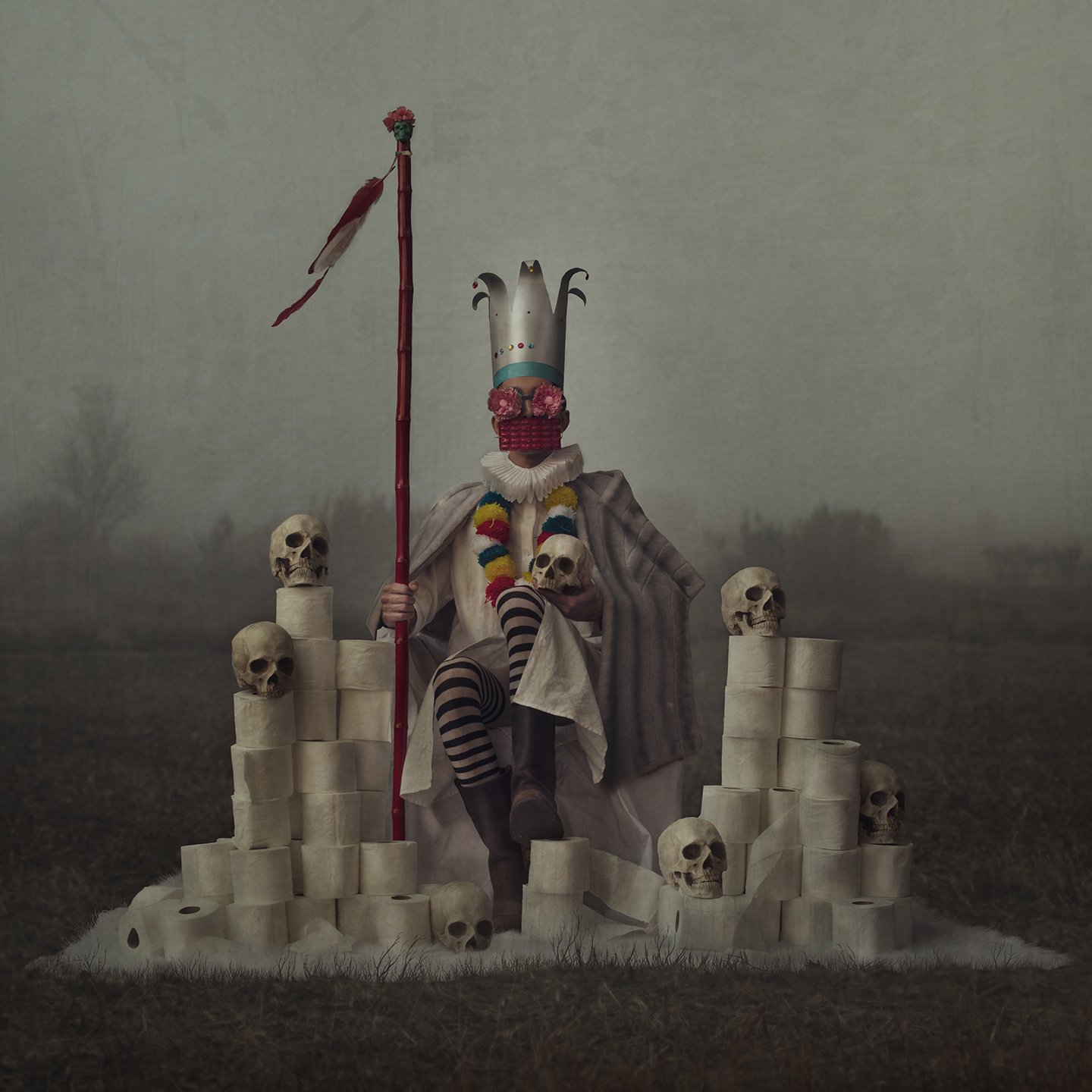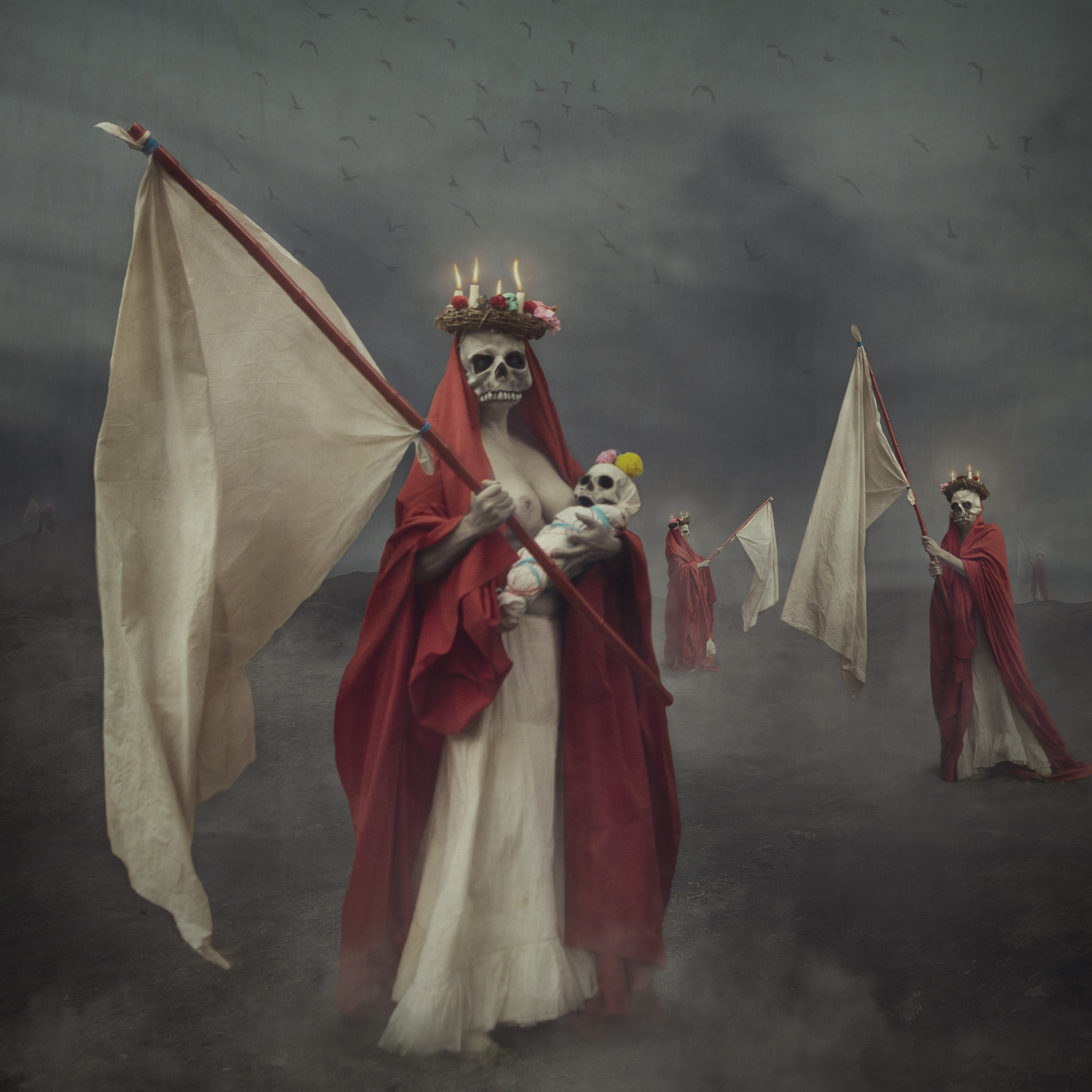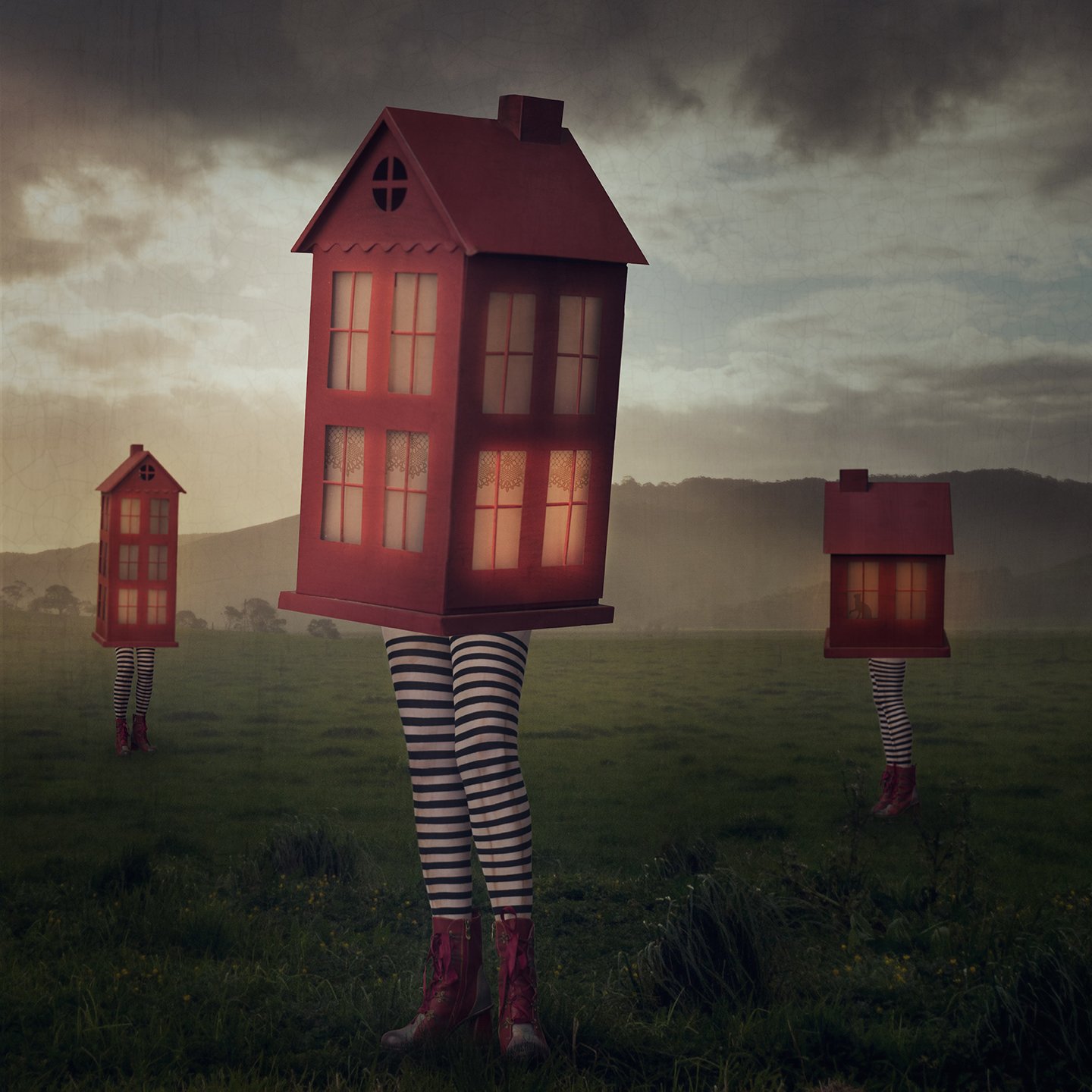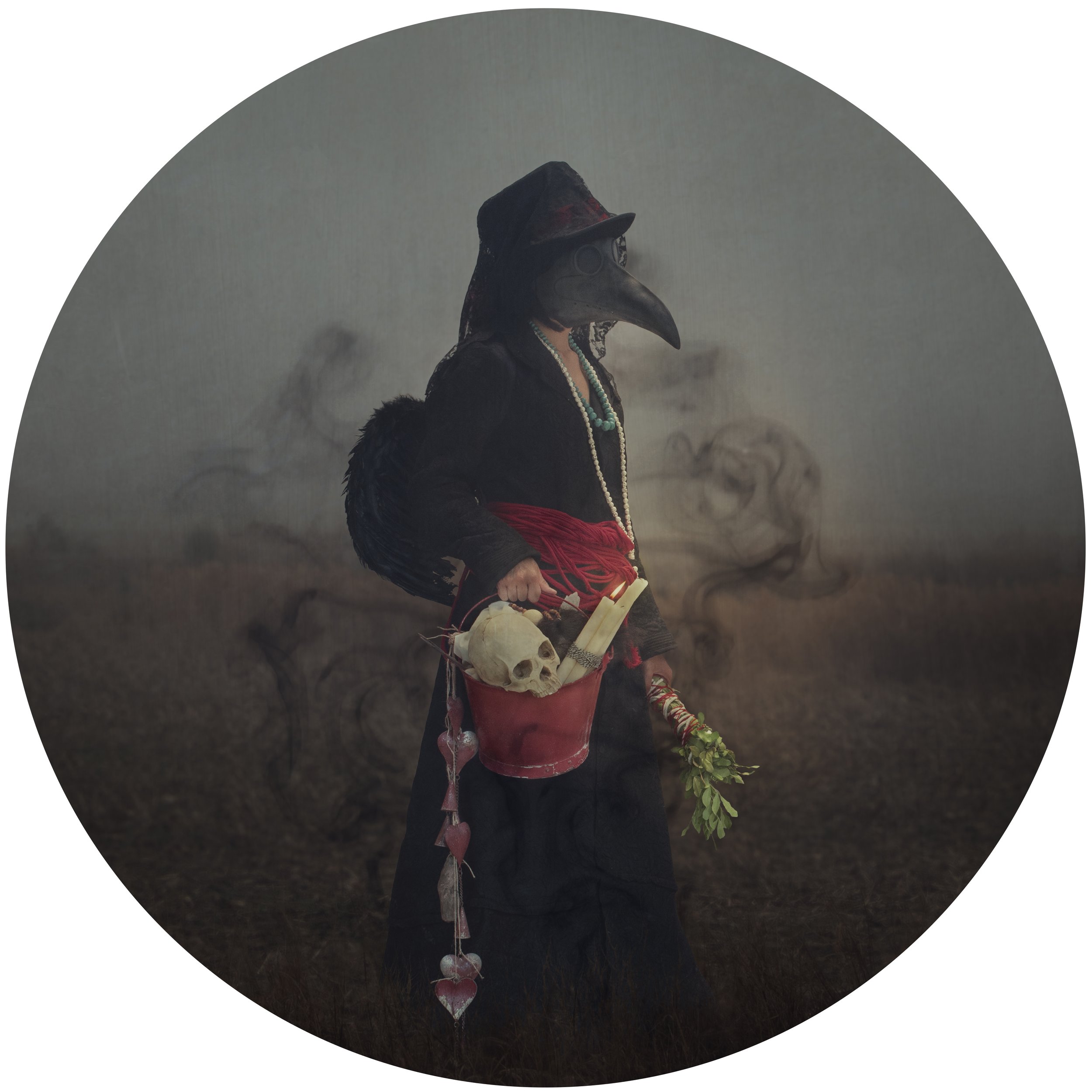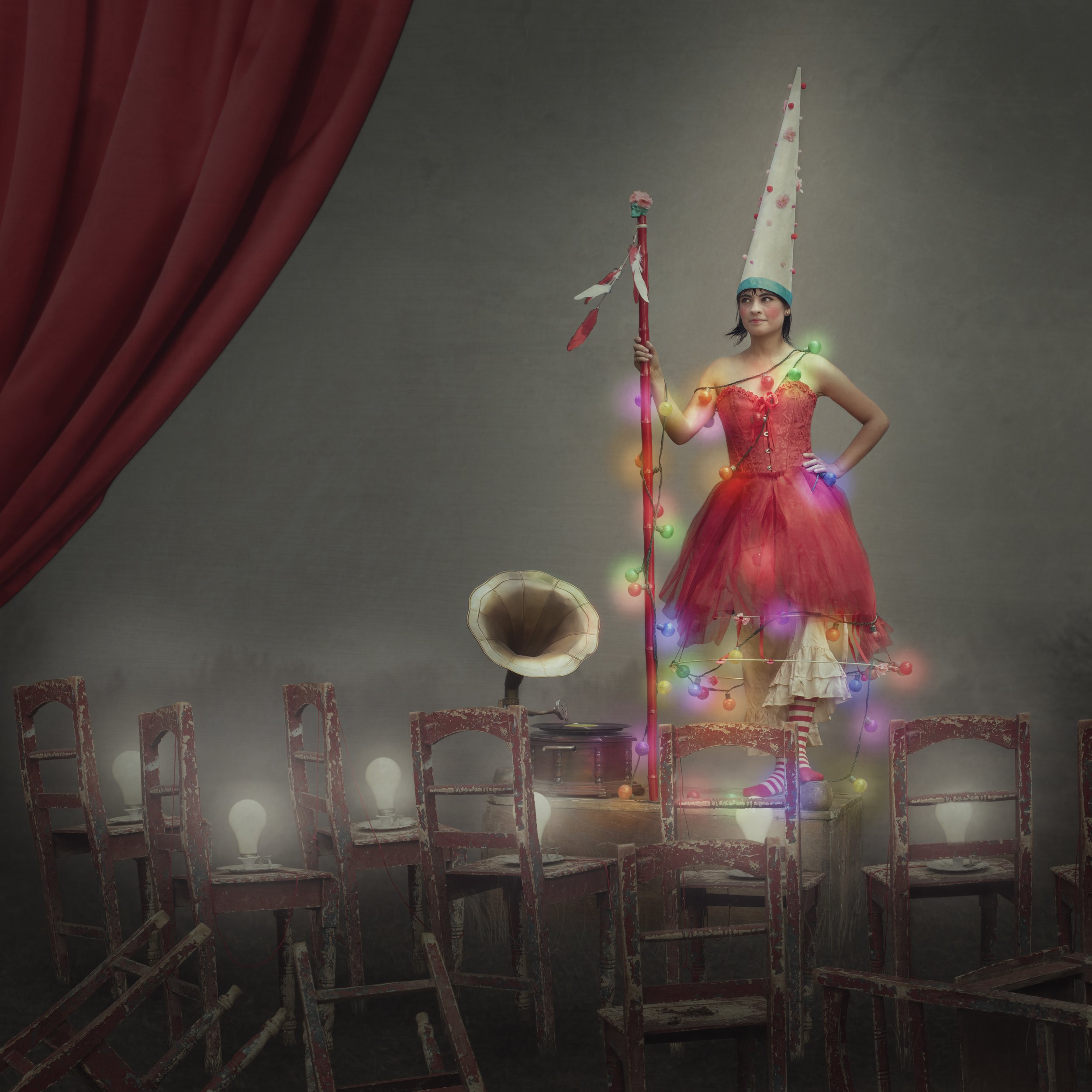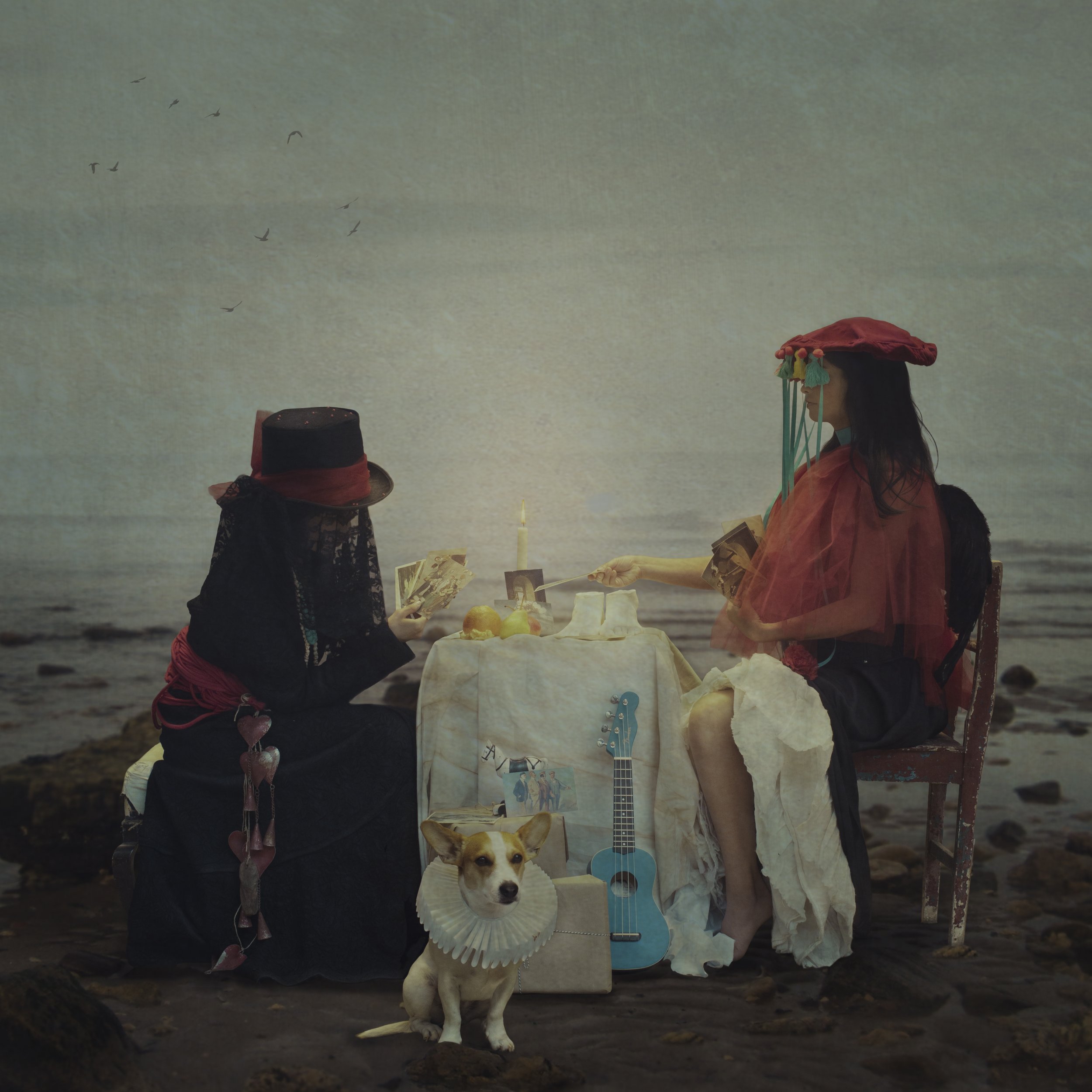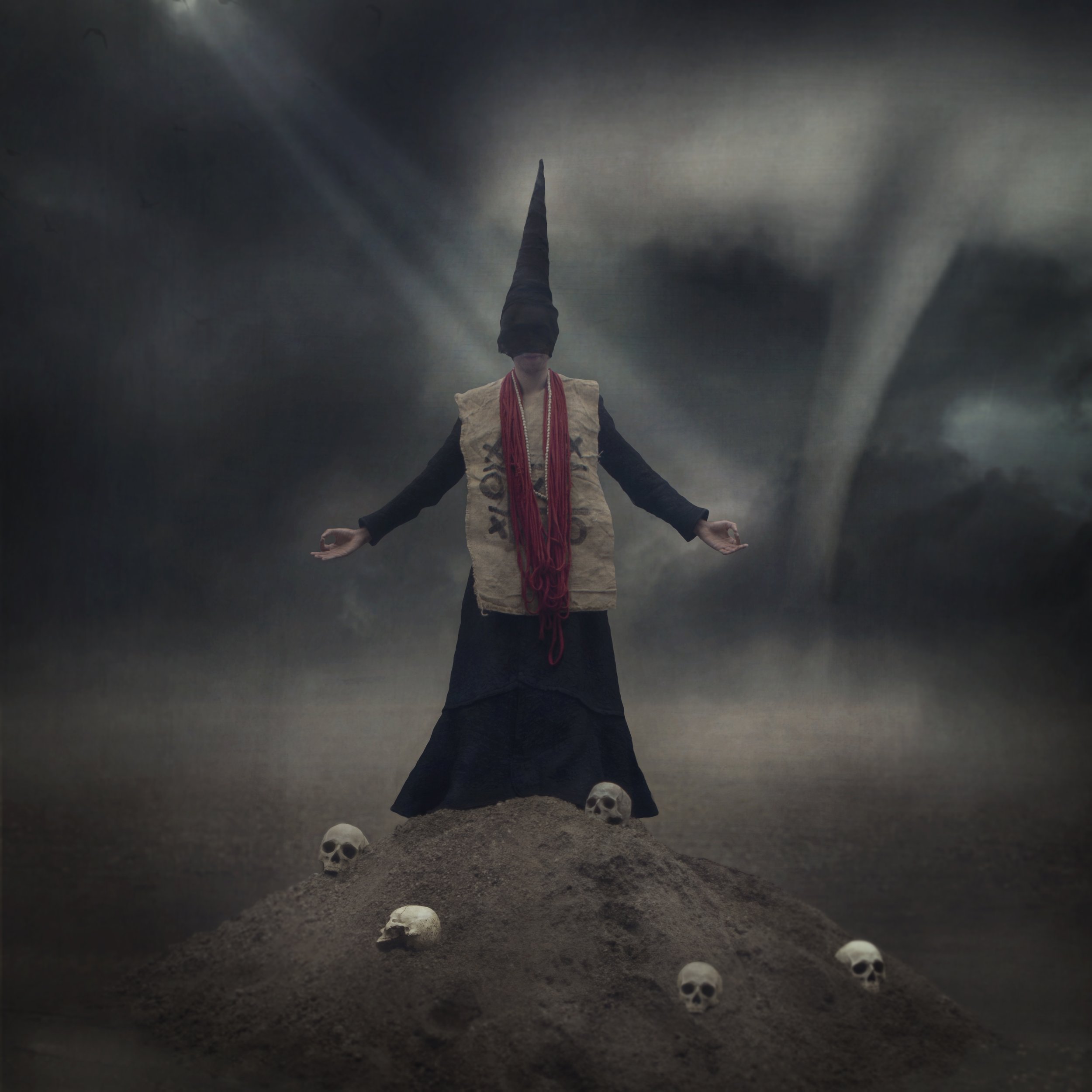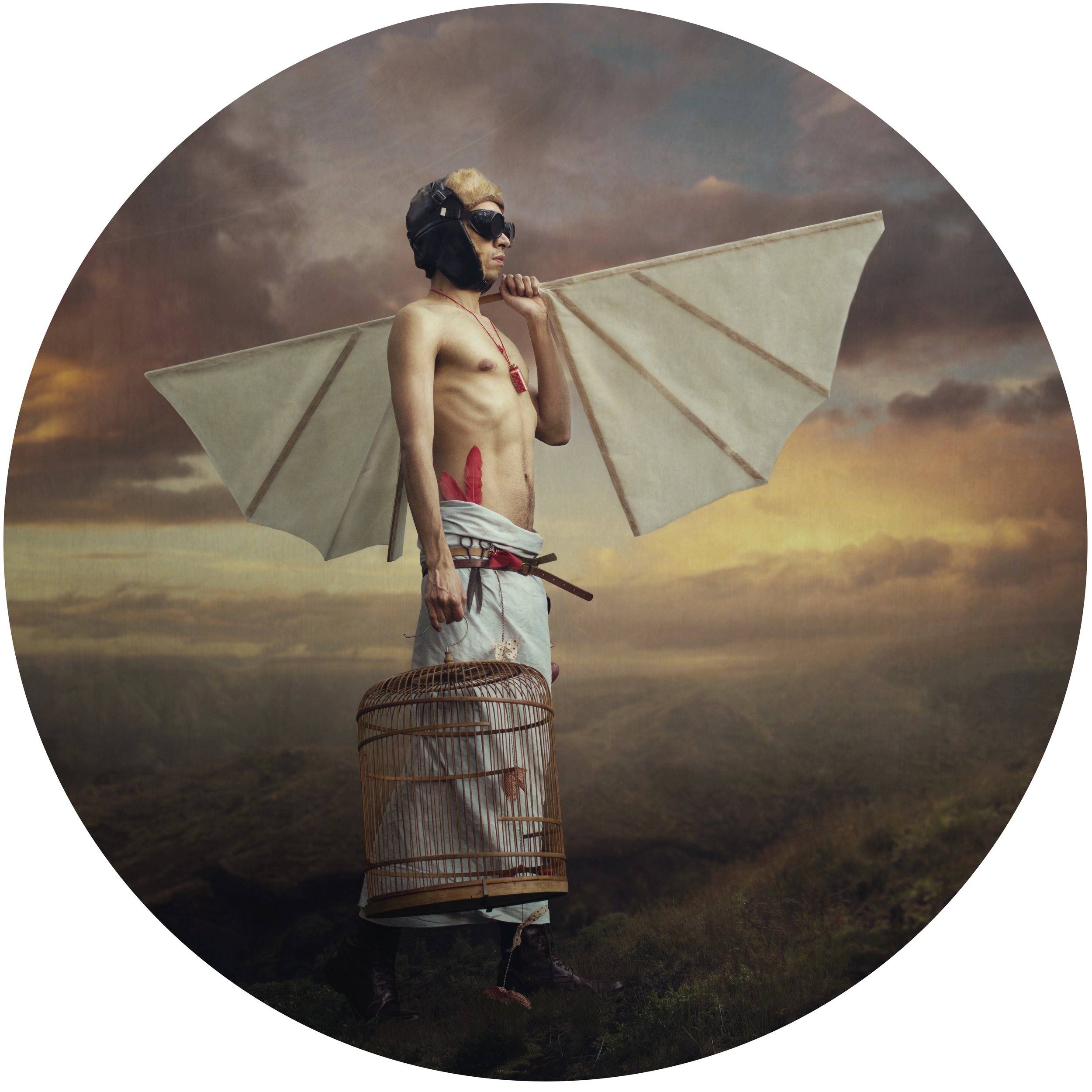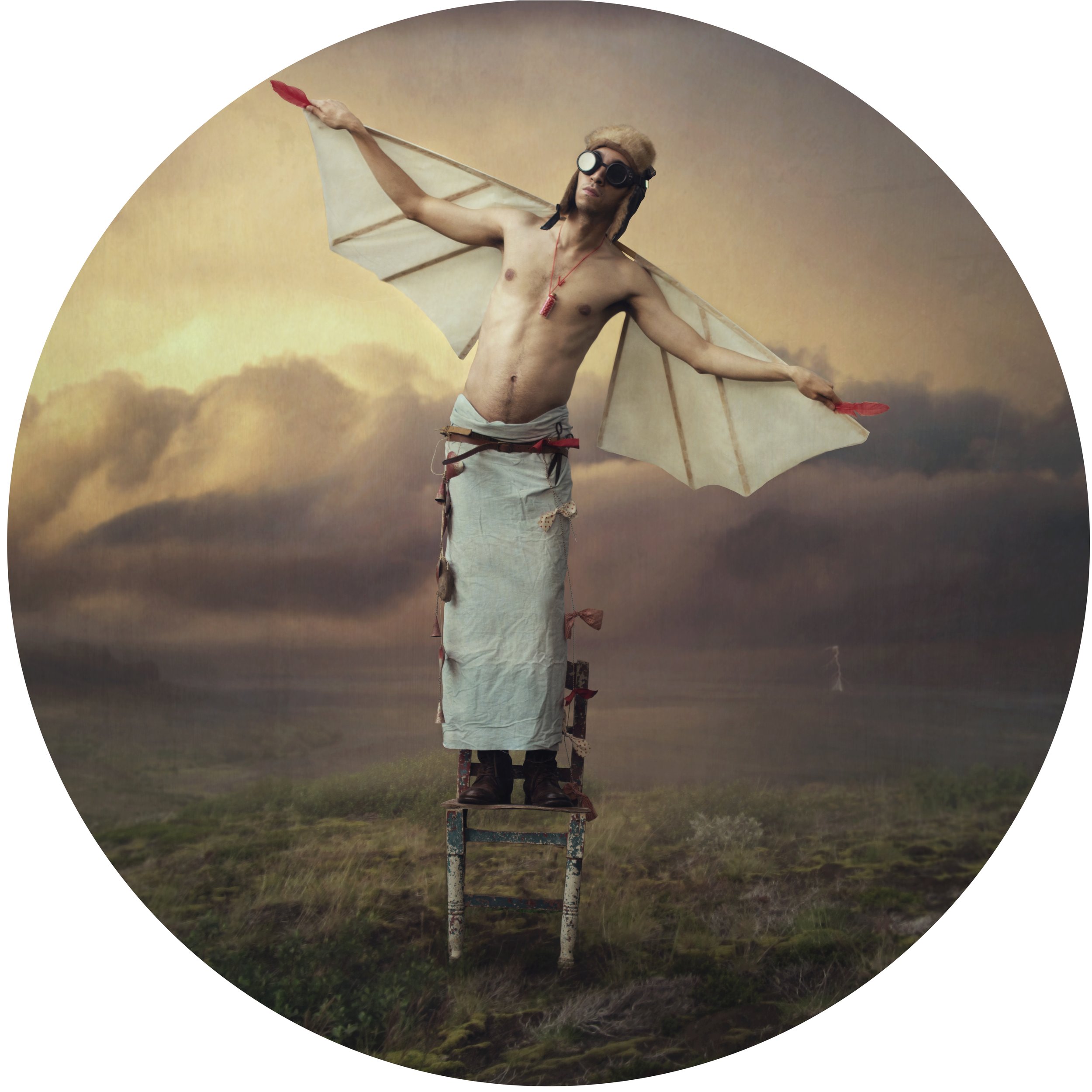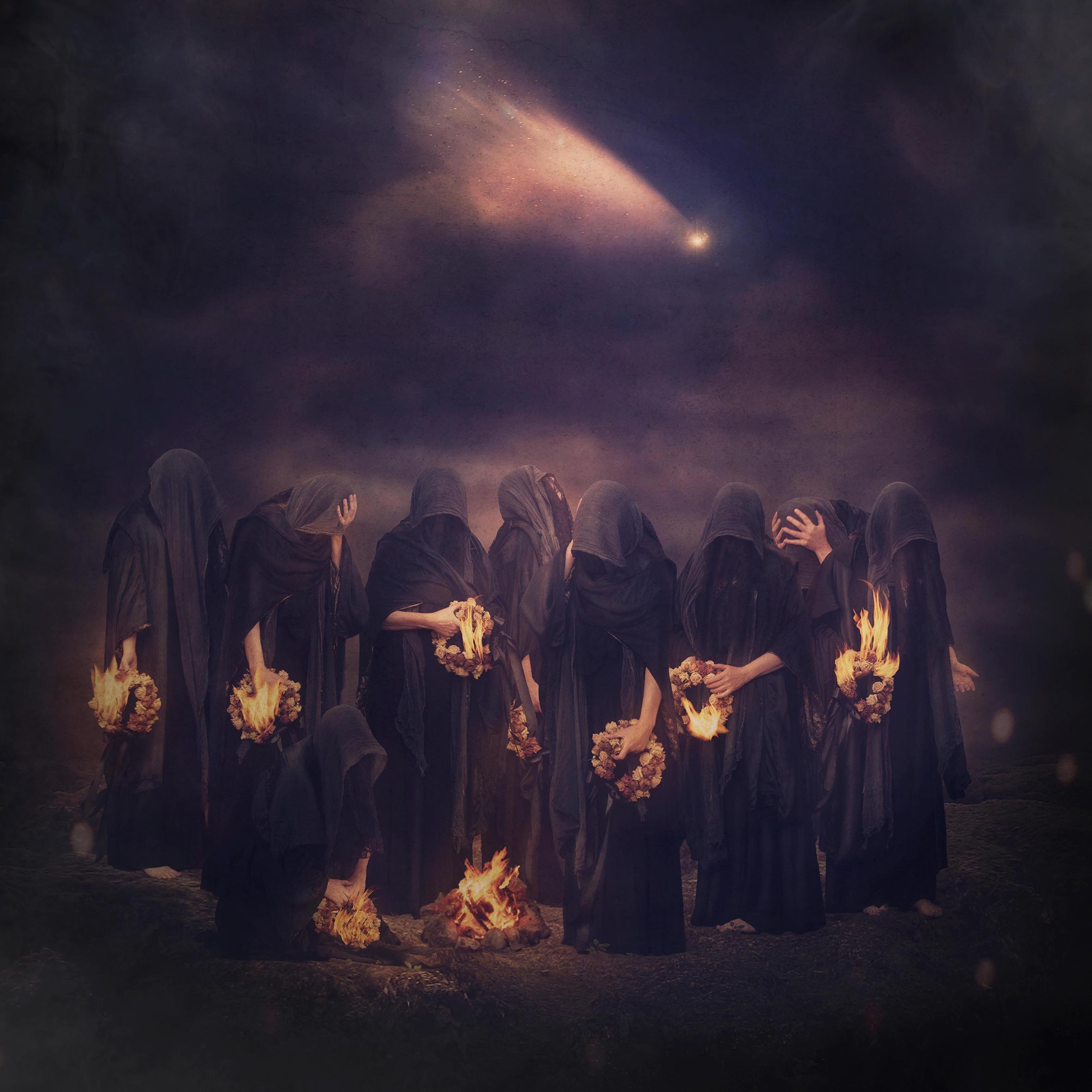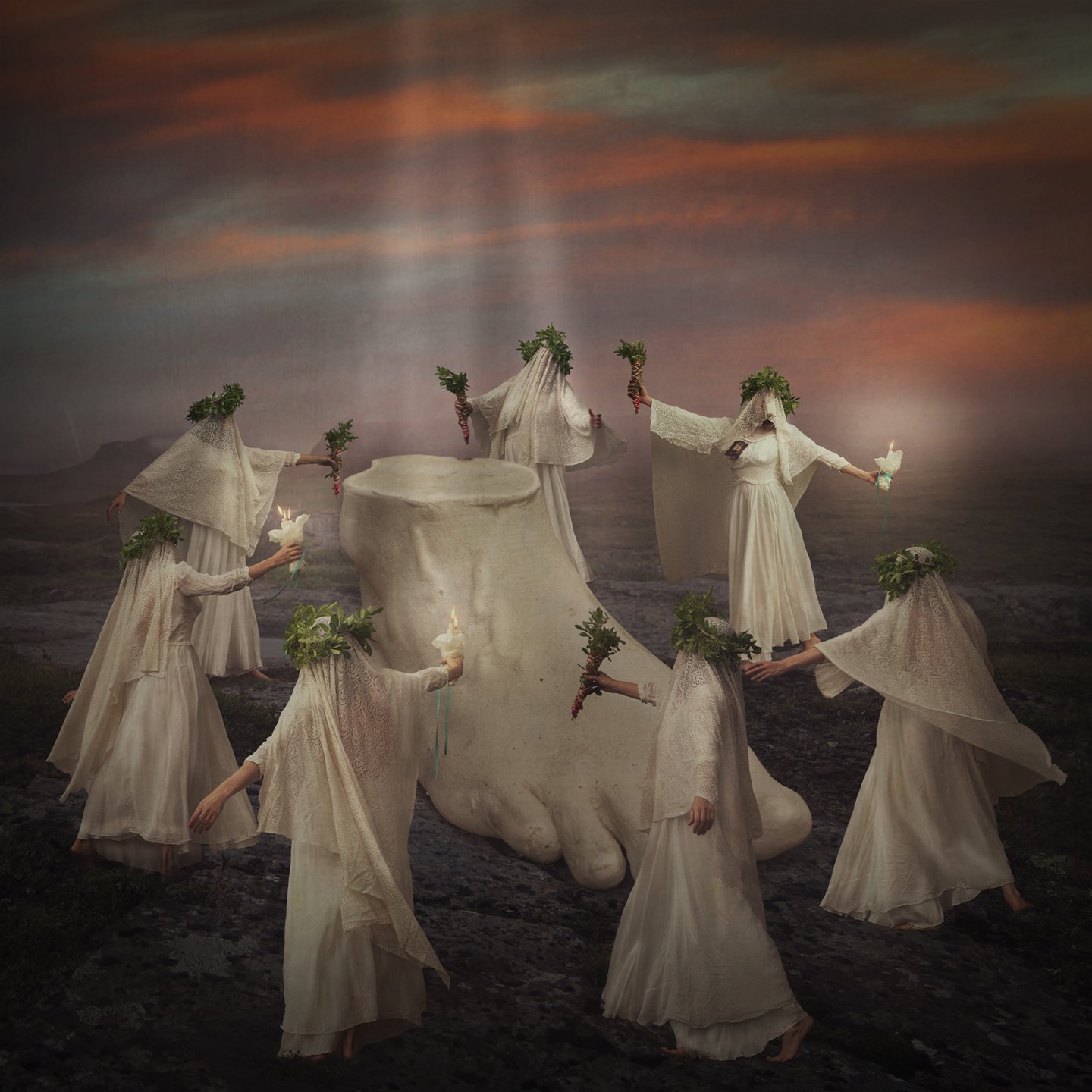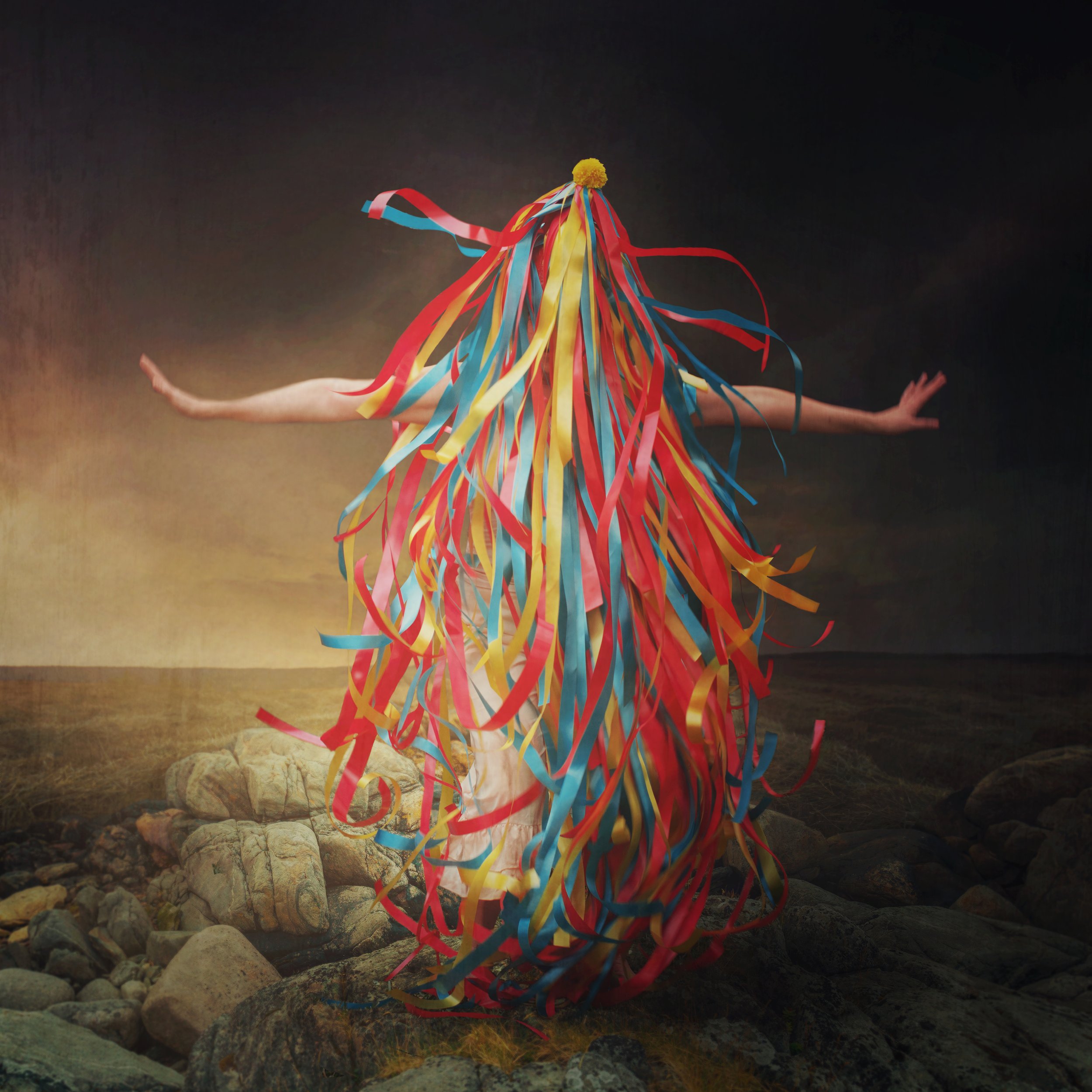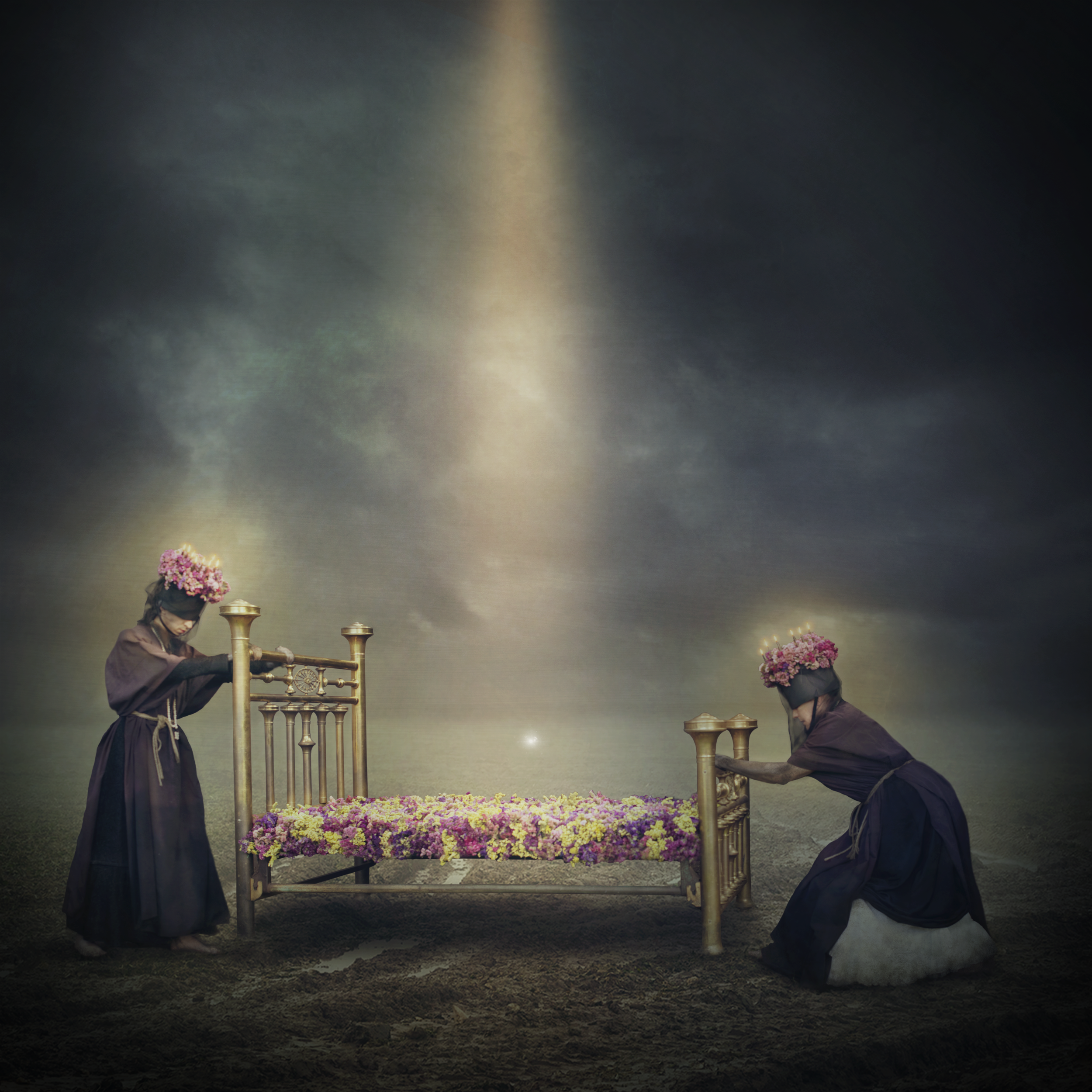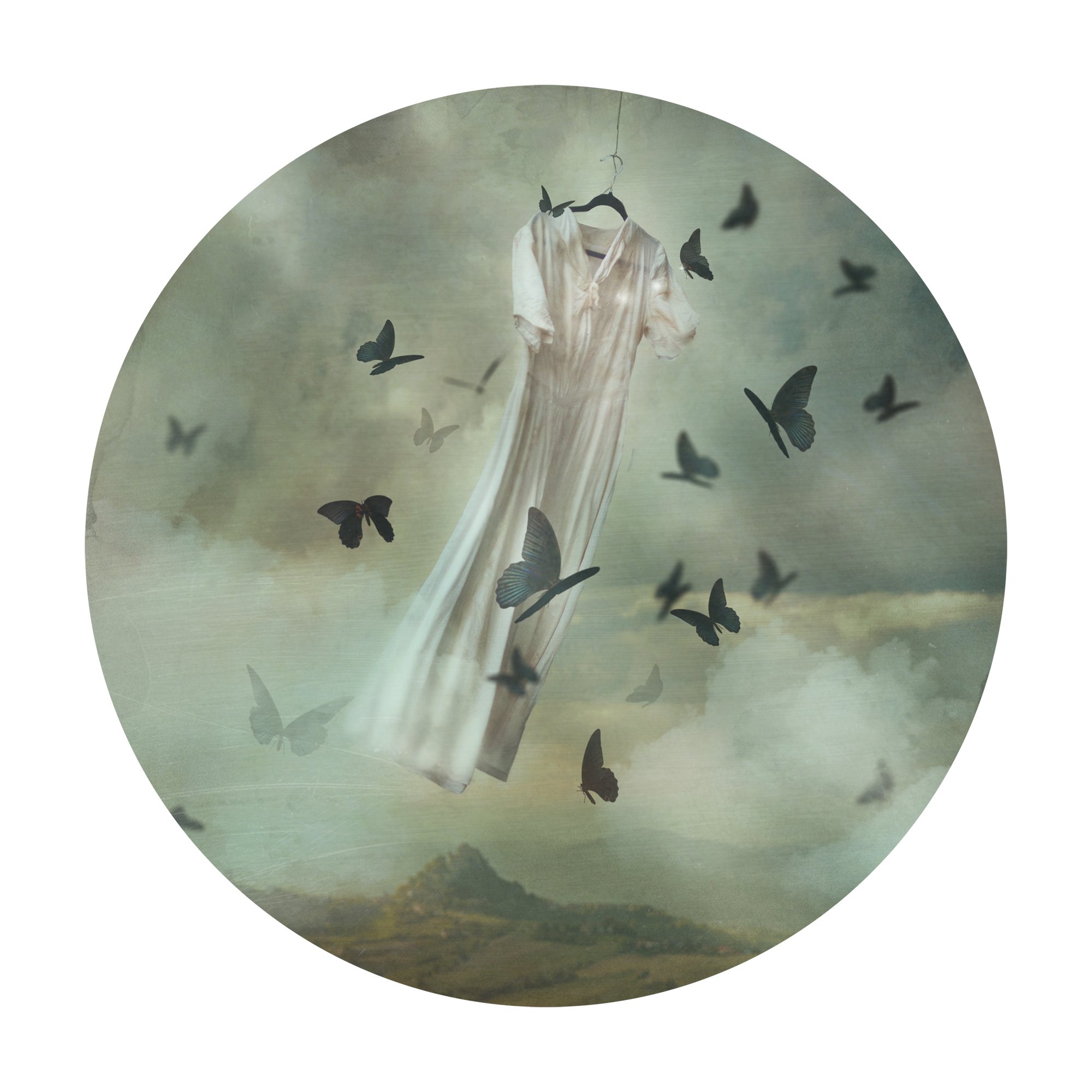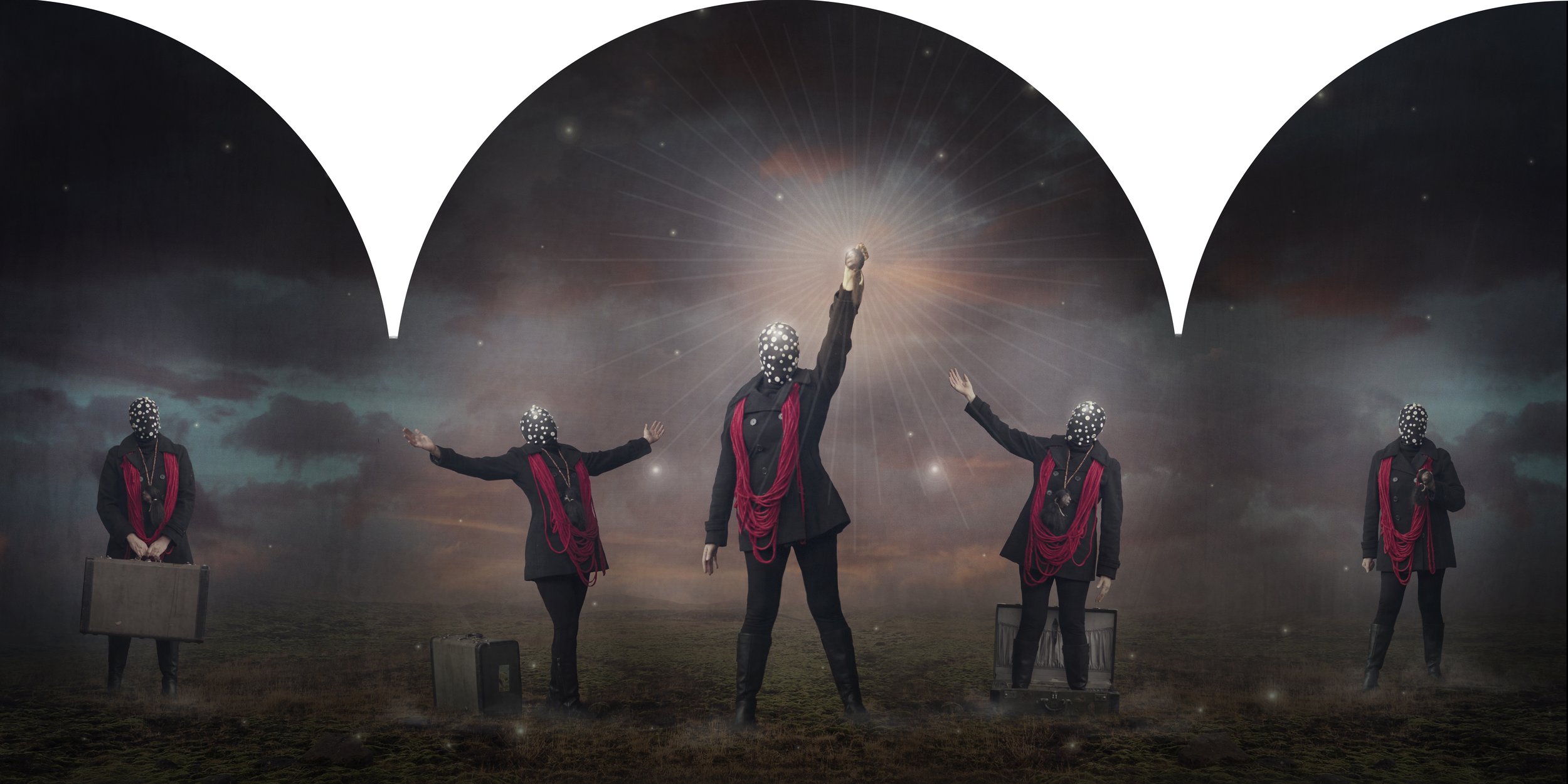THE MUTANTS OF ATTACHMENT
Artwork Manifesto
During the period of isolation, I created a series of photographs in which, with a touch of cynicism and fantasy, I sought to portray human situations that unfolded during this turbulent and difficult time of the pandemic.
Confined within my home, unable to go outside, I set out to develop the characters, costumes, and accessories for each piece using only the objects and materials I had within the walls of my confinement.
I created figurative works with individual narratives set in a fantastic world, leaving room for the viewer to interpret them through their own lens—in a space of nostalgia and imagination. All the characters found themselves in a state of transition and contemplation, beyond the bounds of reality, where the inner world was all that mattered amid the existing chaos.
Amid social isolation, fear, illness, ignorance, and economic hardship, collective priorities shifted. And on a personal level, my life was also transformed—by a completely unexpected and inexplicable turn: the death of my daughter.
From that moment on, the series began to mutate. It became a mirror of my thoughts and feelings. I believe the universe, through my work, was preparing me for this involuntary detachment. It began with letting go of material attachments and evolved into the release of what was most precious—life itself. This artistic manifestation became my only way to reflect the helplessness, pain, rage, and frustration of the most devastating experience of my life.
The world I once knew will never be the same again. Everything is different now—empty, senseless. And to bear this, I must learn to accept change, no matter how painful it may be. If I cling to the illusion of permanence, I will fill myself with frustration, suffering, and misery, making my existence heavier and more difficult to endure.
Detachment—from material things, social and emotional ties, actions, thoughts, even from life itself—is the path to wisdom, inner peace, and spiritual liberation. Letting go of everything in order to become divine ether, a state of perfection. Learning to release, to stop clinging, to stop needing, to overcome the fear of loss—reaching happiness by no longer expecting it to arise from what I possess, but from within myself, from my essence, from what I truly am.
“I believe the universe prepared me, through my work, for this involuntary detachment. It began with material attachments and evolved into the release of what was most precious—life itself. This artistic manifestation became, for me, the only way to reflect my helplessness, pain, anger, and frustration in the face of the most devastating experience of my life. To let go of everything in order to become the divine ether of perfection.”
Rocio Villanueva
Both the appropriation of space and the conception of time are agreements we adhere to in order to understand and communicate our relational identity with the body. However, there is no time, no space—only chaos. Rocío’s works are a fantastical analogy of her very existence, not of a projected or imagined one. Her stagings speak of life—of what has been lived. Rocío tells us: “I created figurative works with individual narratives set in a fantastic world, leaving room for the viewer to interpret them in their own way, in a nostalgic and imaginary place.”
Her characters are always in some kind of movement—carrying something, bringing something. They are rooted in the present, coming and going, dancing with life and death. Though her tableaux invite us into a realm of fantastical imagination, in these scenes we are not participants in a reality, but witnesses to a madness that heals. “All the characters were in a state of transition and contemplation, beyond reality, where the inner world was all that mattered amid the existing chaos,” the artist states when speaking of her stagings.
In his book "Lessons for Mutants", Alejandro Jodorowsky suggests that in order to transcend, human beings have at their disposal keys such as meditation, art, dreams, certain sacred substances, magic, alchemy, language, humor, or tarot. It is precisely in this alignment of consciousness that Rocío materializes her imagination into artistic work. Speaking of the relationship between matter and dreams, we are reminded of Gaston Bachelard’s words in “The Earth and the Reveries of Will”: “The truth is that material reveries change the dimension of our forces; they give us the illusion of omnipotence.”
Renato Osoy
